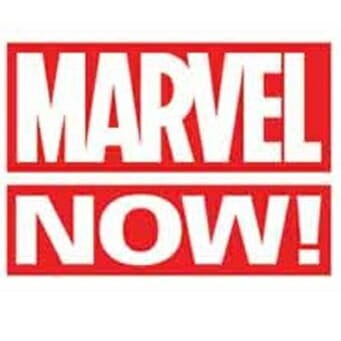Giant-Sized Comic Book & Graphic Novel Round-Up (11/28/12)


Sunday in the Park with Boys
by Jane Mai
Koyama Press, 2012
Rating: 7.7
Jane Mai’s 52-page little black-and-white story from Koyama makes an interesting pairing with Eat More Bikes because I can hardly imagine two more different books. Apart from their brevity, lack of color and publisher, the two have nothing in common, which is part of what’s nice about Koyama’s offerings: diversity. Sunday in the Park with Boys is about what depression feels like from the inside, although it never explicitly says so. Instead, Mai represents what David Foster Wallace called “the bad thing” as a centipede-like creature, growing and devouring, slithering and embracing her protagonist. It’s almost unbearable to read and yet the book’s minimalism and Mai’s smart sense of pacing (some pages have many panels, some only one or two) contributes to the effectiveness of her story. (HB)

Marked Man
by Howard Chaykin and Jesus Aburto
**Dark Horse, 2012
Rating: 5.6
The only real problem with Ed Brubaker is his unbelievable success, which, much like Quentin Tarantino’s gift for creating new stories within familiar genres, has led to a legion of inferior imitators in the field of crime narrative. Marked Man is a perfect example of this. It’s not so bad in its own right, I guess, but its self-conscious grittiness really wears on the nerves. Did innocents really need to get horribly murdered to prove a point? Does sexual assault need to be added to beating and killing? And the first-person narration by a criminal isn’t done badly, but it, too, is a cliché by now. Chaykin’s protagonist is somewhat interesting as a character, but he should have let someone else do the art, which makes every character rough and ugly, both cartoonish and too referenced from life. The whole thing feels like a tryout for a longer series, and it’s possible some of the problems would get ironed out in such a situation, but as is, the book just kind of sits there. (HB)

City in the Desert: The Monster Problem
by Moro Rogers
Archaia, 2012
Rating: 7.5
The set up for City in the Desert, the debut of Moro Rogers, reminds one of nothing so much as an elaborate platformer video game: Long ago, in another world, man and god fought, due to man’s disobedience, so god created monsters to keep him in check. Monster hunters Irro (from a long line of same) and Hari (his assistant, a sort of monkey girl who may be part monster herself) encounter a religious sect with a plan to rid the world of monsters once and for all, but it may have a pretty serious downside. Interesting locations, big backstory, world at stake, a bit of collecting and fighting—it’s a bit corny to start out with, but Rogers generally has a light touch. Her visual style is, if anything, too simple, pleasantly monochromatic and based on a limited number of lines (marred only by a few panels with noticeable and ugly digital blurring), and discovering that she comes from an animation background explains her ability to convey a thought process in a gesture. Her writing is better, with a nice balance among plot, story arc, character development and dialogue, and, for dealing with complex and somewhat theological issues (free will: yea or nay?), it’s impressively laconic. It’s a good debut, one that makes you race to the end only to discover a cruel cliffhanger. Thankfully, volume 2 is coming up at some point. (HB)

Eat More Bikes
by Nathan Bulmer
Koyama, 2012
Rating: 7.3
-

-

-

-

-

-

-

-

-

-

-

-

-

-

-

-

-

-

-

-

-

-

-

-

-

-

-

-

-

-

-

-

-

-

-

-

-

-

-

-












































